"Entrepreneur Elon Musk" The Mind behind Tesla, SpaceX, SolarCity...
“Failure is an option here. If things are not failing, you are not innovating enough.”
Elon Musk is the CEO and product architect of Tesla Motors and the CEO/CTO of Space Exploration Technologies (SpaceX).
Entrepreneur
Elon Musk is a man with many plans. The founder of PayPal, Tesla Motors
and SpaceX sits down with TED curator Chris Anderson to share details
about his visionary projects, which include a mass-marketed electric
car, a solar energy leasing company and a fully reusable rocket.
Watch to Elon Musk at TED Live
Why you should listen
Elon Musk is the chief designer for SpaceX, overseeing development of rockets and spacecraft for missions to Earth orbit and ultimately to other planets. In 2008, SpaceX’s Falcon 9 rocket and Dragon spacecraft won the NASA contract to provide a commercial replacement for the cargo transport function of the space shuttle. In 2012, SpaceX became the first commercial company to dock with the International Space Station and return cargo to Earth with the Dragon.
At Tesla, Musk has overseen product development and design from the beginning, including the all-electric Tesla Roadster, Model S and Model X, and overseeing the rollout of Supercharger stations to keep the cars juiced up. (Some of the charging stations use solar energy systems from SolarCity, of which Musk is the non-executive chair.) Transitioning to a sustainable energy economy, in which electric vehicles play a pivotal role, has been one of his central interests for almost two decades. He co-founded PayPal and served as the company's chair and CEO.
What others say
“I'm glad that Tesla is pushing the envelope. No one else was going to do it. Dream big or go home.” — Margarita, commenting on nytimes.com

Photography: FANUC Robot Assembly Demo by Steve Jurvetson (CC BY)
ELON MUSK PROJECTS
Zip2
In 1995, Musk and his brother, Kimbal, started Zip2, a web software company, with US$28,000 of their father's (Errol Musk) money. The company developed and marketed an Internet "city guide" for the newspaper publishing industry. Musk obtained contracts with The New York Times and the Chicago Tribune and persuaded the board of directors to abandon plans for a merger with CitySearch. While at Zip2, Musk wanted to become CEO; however, none of the board members would allow it. Compaq acquired Zip2 for US$307 million in cash and US$34 million in stock options in February 1999. Musk received 7% or US$22 million from the sale X.com and PayPal
In March 1999, Musk co-founded X.com, an online financial services and e-mail payment company, with US$10 million from the sale of Zip2. One year later, the company merged with Confinity, which had a money transfer service called PayPal. The merged company focused on the PayPal service and was renamed PayPal in 2001. PayPal's early growth was driven mainly by a viral marketing campaign where new customers were recruited when they received money through the service. Musk was later ousted from his role as CEO over disagreements regarding the future architecture of PayPal as a proponent of Microsoft Windows.In October 2002, PayPal was acquired by eBay for US$1.5 billion in stock, of which US$165 million was given to Musk. Before its sale, Musk, who was the company's largest shareholder, owned 11.7% of PayPal's shares.
SpaceX
In 2001, Musk conceptualized "Mars Oasis"; a project to land a miniature experimental greenhouse on Mars, containing food crops growing on Martian regolith, in an attempt to regain public interest in space exploration. In October 2001, Musk travelled to Moscow with Jim Cantrell (an aerospace supplies fixer), and Adeo Ressi (his best friend from college), to buy refurbished ICBMs (Dnepr-1) that could send the envisioned payloads into space. The group met with companies such as NPO Lavochkin and Kosmotras, however, according to Cantrell, Musk was seen as a novice and was consequently spat on by one of the Russian chief designers, and the group returned to the United States empty-handed. In February 2002, the group returned to Russia to look for three ICBMs, bringing along Mike Griffin, who had worked for the CIA's venture capital arm, In-Q-Tel; NASA's Jet Propulsion Laboratory; and was just leaving Orbital Sciences, a maker of satellites and spacecraft. The group met again with Kosmotras, and were offered one rocket for US$8 million, however, this was seen by Musk as too expensive; Musk consequently stormed out of the meeting. On the flight back from Moscow, Musk realized that he could start a company that could build the affordable rockets he needed. According to early Tesla and SpaceX investor Steve Jurvetson, Musk calculated that the raw materials for building a rocket actually were only 3 percent of the sales price of a rocket at the time. By applying vertical integration and the modular approach from software engineering, SpaceX could cut launch price by a factor of ten and still enjoy a 70 percent gross margin. Ultimately, Musk ended up founding SpaceX with the long-term goal of creating a "true spacefaring civilization".
With US$100 million of his early fortune Musk founded Space Exploration Technologies, or SpaceX, in June 2002. Musk is chief executive officer (CEO) and chief technology officer (CTO) of the Hawthorne, California-based company. SpaceX develops and manufactures space launch vehicles with a focus on advancing the state of rocket technology. The company's first two launch vehicles are the Falcon 1 and Falcon 9 rockets (a nod to Star Wars' Millennium Falcon), and its first spacecraft is the Dragon (a nod to Puff the magic dragon). In seven years, SpaceX designed the family of Falcon launch vehicles and the Dragon multipurpose spacecraft. In September 2009, SpaceX's Falcon 1 rocket, became the first privately funded liquid-fueled vehicle to put a satellite into Earth orbit. On May 25, 2012, the SpaceX Dragon vehicle berthed with the ISS, making history as the first commercial company to launch and berth a vehicle to the International Space Station.
In 2006, SpaceX was awarded a contract from NASA to continue the development and test of the SpaceX Falcon 9 launch vehicle and Dragon spacecraft in order to transport cargo to the International Space Station, followed by a US$1.6 billion NASA launch contract on December 23, 2008 for 12 flights of its Falcon 9 rocket and Dragon spacecraft to the Space Station, replacing the US Space Shuttle after it retired in 2011. SpaceX is one of two contractors in the Commercial Resupply Services program, which replaced the cargo transport function of the Space Shuttle. Astronaut transport to the ISS is currently handled solely by the Soyuz, but as of 2014, SpaceX is also one of two companies remaining in the Commercial Crew Development program, which is intended to develop a US astronaut transport capability. SpaceX is both the largest private producer of rocket motors in the world, and holder of the record for highest thrust-to-weight ratio for any known rocket motor. In two years, SpaceX has produced more than 100 operational Merlin 1D engines, currently the world's most powerful motor for its weight. The relatively immense power to weight ratio allows each Merlin 1D motor to vertically lift the weight of 40 average family cars. In combination, the 9 Merlin engines in the Falcon 9 first stage produces anywhere from 5.8 to 6.7 MN (1.3 to 1.5 million pounds) of thrust, depending on altitude.
Musk was influenced by Isaac Asimov's Foundation series and views space exploration as an important step in expanding—if not preserving—the consciousness of human life. Musk said that multiplanetary life may serve as a hedge against threats to the survival of the human species.
An asteroid or a super volcano could destroy us, and we face risks the dinosaurs never saw: an engineered virus, inadvertent creation of a micro black hole, catastrophic global warming or some as-yet-unknown technology could spell the end of us. Humankind evolved over millions of years, but in the last sixty years atomic weaponry created the potential to extinguish ourselves. Sooner or later, we must expand life beyond this green and blue ball—or go extinct.
His goal is to reduce the cost of human spaceflight by a factor of 10. In a 2011 interview, he said he hopes to send humans to Mars' surface within 10–20 years. In Ashlee Vance's biography on Musk, Musk reveals that he wishes to establish a Mars colony by 2040, with a population of 80,000. Musk stated that, since Mars atmosphere lacks oxygen, all transportation would have to be electric (electric cars, electric trains, Hyperloop, electric aircraft).

Photography: Elon Musk, Tesla Factory, Fremont (CA, USA) by Maurizio Pesce (CC BY)
Tesla Motors
Tesla Motors was incorporated in July 2003 by Martin Eberhard and Marc Tarpenning, who financed the company until the Series A round of funding. Both men played active roles in the company's early development prior to Elon Musk's involvement. Musk led the Series A round of investment in February 2004, joining Tesla's board of directors as its chairman. Musk took an active role within the company and oversaw Roadster product design at a detailed level, but was not deeply involved in day-to-day business operations.
Following the financial crisis in 2008, Musk assumed leadership of the company as CEO and product architect, positions he still holds today. Tesla Motors first built an electric sports car, the Tesla Roadster, with sales of about 2,500 vehicles to 31 countries. Tesla began delivery of its four-door Model S sedan on June 22, 2012. It unveiled its third product, the Model X, aimed at the SUV/minivan market, on February 9, 2012; the Model X launch was however delayed until September 2015. In addition to its own cars, Tesla sells electric powertrain systems to Daimler for the Smart EV, Mercedes B-Class Electric Drive and Mercedes A Class and to Toyota for the RAV4 EV. Musk was able to bring in both companies as long-term investors in Tesla.
Musk has favored building a sub-US$30,000 subcompact Tesla model and building and selling electric vehicle powertrain components so that other automakers can produce electric vehicles at affordable prices without having to develop the products in-house. Several mainstream publications have compared him with Henry Ford for his work on advanced vehicle powertrains.
To overcome the range limitations of electric cars, Musk said in an interview with All Things Digital in May 2013 that Tesla is "dramatically accelerating" their network of supercharger stations, tripling the number on the East and West coasts of the U.S. that June, with plans for more expansion across North America, including Canada, throughout the year. As of January 29, 2016, Musk owns about 28.9 million Tesla shares, which equates to about 22% of the company. While previously taking large annual salaries at Tesla Motors, for example US$78.2 million in 2012; when Musk became the highest paid CEO in the world, as of 2014, Musk's annual salary is one dollar, and similar to Steve Jobs and others, the remainder of his compensation is in the form of stock and performance-based bonuses.
In 2014, Musk announced that Tesla Motors will allow its technology patents to be used by anyone in good faith in a bid to entice automobile manufacturers to speed up development of electric cars. "The unfortunate reality is electric car programs (or programs for any vehicle that doesn't burn hydrocarbons) at the major manufacturers are small to non-existent, constituting an average of far less than 1% of their total vehicle sales", Musk said.
SolarCity
Musk provided the initial concept, and financial capitals for SolarCity, which was then co-founded in 2006 by his cousins Lyndon and Peter Rive. Musk remains the largest shareholder. SolarCity is now the second largest provider of solar power systems in the United States.
The underlying motivation for funding both SolarCity and Tesla is to help combat global warming. In 2012, Musk announced that SolarCity and Tesla Motors are collaborating to use electric vehicle batteries to smooth the impact of rooftop solar on the power grid, with the program going live in 2013.
On June 17, 2014, Musk committed to building a SolarCity advanced production facility in Buffalo, New York, that would triple the size of the largest solar plant in the United States. Musk stated the plant will be "one of the single largest solar panel production plants in the world", and it will be followed by one or more even bigger facilities in subsequent years.
Hyperloop
On August 12, 2013, Musk unveiled a proposal for a new form of transportation between the Greater Los Angeles Area and the San Francisco Bay Area, after being disappointed with the approved California High-Speed Rail system. After envisioning Hyperloop, Musk assigned a dozen engineers from Tesla Motors and SpaceX who worked for nine months, establishing the conceptual foundations and creating the designs for the transportation system. An early design for the system was then published in a whitepaper posted to the Tesla and SpaceX blogs.
Musk named it "hyperloop", a hypothetical subsonic air travel machine that stretches approximately 350 miles (560 kilometres) from Sylmar (a northern district of Los Angeles) to Hayward (east of San Francisco) and would theoretically allow commuters to travel between the cities in 35 minutes or less, providing a shorter traveling time than even a commercial airplane can currently provide. Musk's proposal, if technologically feasible at the costs he has cited, would make travel cheaper than any other mode of transport for such long distances. The system is proposed to use a partial vacuum to reduce aerodynamic drag, which it is theorized would allow for high speed travel with relatively low power. He has estimated the total cost of the system at US$6 billion, but this amount is speculative. On January 15, 2015 Elon Musk announced via Twitter that he would be building a 5-mile-long Hyperloop track most likely in Texas for students and companies to work with.
The company Hyperloop Transportation Technologies has agreed to a deal with proposed 75,000-resident solar power city Quay Valley, California, halfway between Los Angeles and San Francisco, to build a 5-mile Hyperloop track around the community. Construction is set to begin in 2016.
OpenAI
In December 2015, Elon Musk announced the creation of OpenAI, a not-for-profit artificial intelligence (AI) research company. OpenAI aims to develop artificial general intelligence in a way that is safe and beneficial to humanity. By making AI available to everyone, OpenAI wants to "counteract large corporations who may gain too much power by owning super-intelligence systems devoted to profits, as well as governments which may use AI to gain power and even oppress their citizenry".
" Elon Musk: The mind behind Tesla, SpaceX, SolarCity" at TED Talks (CC BY NC ND)
SOURCE:ted.com/talks/elon_musk_the_mind_behind
Elon Musk is the chief designer for SpaceX, overseeing development of rockets and spacecraft for missions to Earth orbit and ultimately to other planets. In 2008, SpaceX’s Falcon 9 rocket and Dragon spacecraft won the NASA contract to provide a commercial replacement for the cargo transport function of the space shuttle. In 2012, SpaceX became the first commercial company to dock with the International Space Station and return cargo to Earth with the Dragon.
At Tesla, Musk has overseen product development and design from the beginning, including the all-electric Tesla Roadster, Model S and Model X, and overseeing the rollout of Supercharger stations to keep the cars juiced up. (Some of the charging stations use solar energy systems from SolarCity, of which Musk is the non-executive chair.) Transitioning to a sustainable energy economy, in which electric vehicles play a pivotal role, has been one of his central interests for almost two decades. He co-founded PayPal and served as the company's chair and CEO.
What others say
“I'm glad that Tesla is pushing the envelope. No one else was going to do it. Dream big or go home.” — Margarita, commenting on nytimes.com
TED
is a nonprofit devoted to spreading ideas, usually in the form of
short, powerful talks (18 minutes or less). TED began in 1984 as a
conference where Technology, Entertainment and Design converged, and
today covers almost all topics — from science to business to global
issues — in more than 100 languages. Meanwhile, independently run TEDx
events help share ideas in communities around the world.
Our Mission: Spread ideasTED
is a global community, welcoming people from every discipline and
culture who seek a deeper understanding of the world. We believe
passionately in the power of ideas to change attitudes, lives and,
ultimately, the world. On TED.com, we're building a clearinghouse of
free knowledge from the world's most inspired thinkers — and a community
of curious souls to engage with ideas and each other, both online and
at TED and TEDx events around the world, all year long.
In fact,
everything we do — from our TED Talks videos to the projects sparked by
the TED Prize, from the global TEDx community to the TED-Ed lesson
series — is driven by this goal: How can we best spread great ideas?
TED is owned by a nonprofit, nonpartisan foundation. Our agenda is to make great ideas accessible and spark conversation.
TED is a nonprofit devoted to spreading ideas, usually in the form of short, powerful talks (18 minutes or less). TED began in 1984 as a conference where Technology, Entertainment and Design converged, and today covers almost all topics — from science to business to global issues — in more than 100 languages. Meanwhile, independently run TEDx events help share ideas in communities around the world.
In fact, everything we do — from our TED Talks videos to the projects sparked by the TED Prize, from the global TEDx community to the TED-Ed lesson series — is driven by this goal: How can we best spread great ideas?
TED is owned by a nonprofit, nonpartisan foundation. Our agenda is to make great ideas accessible and spark conversation.

Photography: FANUC Robot Assembly Demo by Steve Jurvetson (CC BY)
ELON MUSK PROJECTS
Zip2
In 1995, Musk and his brother, Kimbal, started Zip2, a web software company, with US$28,000 of their father's (Errol Musk) money. The company developed and marketed an Internet "city guide" for the newspaper publishing industry. Musk obtained contracts with The New York Times and the Chicago Tribune and persuaded the board of directors to abandon plans for a merger with CitySearch. While at Zip2, Musk wanted to become CEO; however, none of the board members would allow it. Compaq acquired Zip2 for US$307 million in cash and US$34 million in stock options in February 1999. Musk received 7% or US$22 million from the sale X.com and PayPal
In March 1999, Musk co-founded X.com, an online financial services and e-mail payment company, with US$10 million from the sale of Zip2. One year later, the company merged with Confinity, which had a money transfer service called PayPal. The merged company focused on the PayPal service and was renamed PayPal in 2001. PayPal's early growth was driven mainly by a viral marketing campaign where new customers were recruited when they received money through the service. Musk was later ousted from his role as CEO over disagreements regarding the future architecture of PayPal as a proponent of Microsoft Windows.In October 2002, PayPal was acquired by eBay for US$1.5 billion in stock, of which US$165 million was given to Musk. Before its sale, Musk, who was the company's largest shareholder, owned 11.7% of PayPal's shares.
SpaceX
In 2001, Musk conceptualized "Mars Oasis"; a project to land a miniature experimental greenhouse on Mars, containing food crops growing on Martian regolith, in an attempt to regain public interest in space exploration. In October 2001, Musk travelled to Moscow with Jim Cantrell (an aerospace supplies fixer), and Adeo Ressi (his best friend from college), to buy refurbished ICBMs (Dnepr-1) that could send the envisioned payloads into space. The group met with companies such as NPO Lavochkin and Kosmotras, however, according to Cantrell, Musk was seen as a novice and was consequently spat on by one of the Russian chief designers, and the group returned to the United States empty-handed. In February 2002, the group returned to Russia to look for three ICBMs, bringing along Mike Griffin, who had worked for the CIA's venture capital arm, In-Q-Tel; NASA's Jet Propulsion Laboratory; and was just leaving Orbital Sciences, a maker of satellites and spacecraft. The group met again with Kosmotras, and were offered one rocket for US$8 million, however, this was seen by Musk as too expensive; Musk consequently stormed out of the meeting. On the flight back from Moscow, Musk realized that he could start a company that could build the affordable rockets he needed. According to early Tesla and SpaceX investor Steve Jurvetson, Musk calculated that the raw materials for building a rocket actually were only 3 percent of the sales price of a rocket at the time. By applying vertical integration and the modular approach from software engineering, SpaceX could cut launch price by a factor of ten and still enjoy a 70 percent gross margin. Ultimately, Musk ended up founding SpaceX with the long-term goal of creating a "true spacefaring civilization".
With US$100 million of his early fortune Musk founded Space Exploration Technologies, or SpaceX, in June 2002. Musk is chief executive officer (CEO) and chief technology officer (CTO) of the Hawthorne, California-based company. SpaceX develops and manufactures space launch vehicles with a focus on advancing the state of rocket technology. The company's first two launch vehicles are the Falcon 1 and Falcon 9 rockets (a nod to Star Wars' Millennium Falcon), and its first spacecraft is the Dragon (a nod to Puff the magic dragon). In seven years, SpaceX designed the family of Falcon launch vehicles and the Dragon multipurpose spacecraft. In September 2009, SpaceX's Falcon 1 rocket, became the first privately funded liquid-fueled vehicle to put a satellite into Earth orbit. On May 25, 2012, the SpaceX Dragon vehicle berthed with the ISS, making history as the first commercial company to launch and berth a vehicle to the International Space Station.
In 2006, SpaceX was awarded a contract from NASA to continue the development and test of the SpaceX Falcon 9 launch vehicle and Dragon spacecraft in order to transport cargo to the International Space Station, followed by a US$1.6 billion NASA launch contract on December 23, 2008 for 12 flights of its Falcon 9 rocket and Dragon spacecraft to the Space Station, replacing the US Space Shuttle after it retired in 2011. SpaceX is one of two contractors in the Commercial Resupply Services program, which replaced the cargo transport function of the Space Shuttle. Astronaut transport to the ISS is currently handled solely by the Soyuz, but as of 2014, SpaceX is also one of two companies remaining in the Commercial Crew Development program, which is intended to develop a US astronaut transport capability. SpaceX is both the largest private producer of rocket motors in the world, and holder of the record for highest thrust-to-weight ratio for any known rocket motor. In two years, SpaceX has produced more than 100 operational Merlin 1D engines, currently the world's most powerful motor for its weight. The relatively immense power to weight ratio allows each Merlin 1D motor to vertically lift the weight of 40 average family cars. In combination, the 9 Merlin engines in the Falcon 9 first stage produces anywhere from 5.8 to 6.7 MN (1.3 to 1.5 million pounds) of thrust, depending on altitude.
Musk was influenced by Isaac Asimov's Foundation series and views space exploration as an important step in expanding—if not preserving—the consciousness of human life. Musk said that multiplanetary life may serve as a hedge against threats to the survival of the human species.
An asteroid or a super volcano could destroy us, and we face risks the dinosaurs never saw: an engineered virus, inadvertent creation of a micro black hole, catastrophic global warming or some as-yet-unknown technology could spell the end of us. Humankind evolved over millions of years, but in the last sixty years atomic weaponry created the potential to extinguish ourselves. Sooner or later, we must expand life beyond this green and blue ball—or go extinct.
His goal is to reduce the cost of human spaceflight by a factor of 10. In a 2011 interview, he said he hopes to send humans to Mars' surface within 10–20 years. In Ashlee Vance's biography on Musk, Musk reveals that he wishes to establish a Mars colony by 2040, with a population of 80,000. Musk stated that, since Mars atmosphere lacks oxygen, all transportation would have to be electric (electric cars, electric trains, Hyperloop, electric aircraft).

Photography: Elon Musk, Tesla Factory, Fremont (CA, USA) by Maurizio Pesce (CC BY)
Tesla Motors
Tesla Motors was incorporated in July 2003 by Martin Eberhard and Marc Tarpenning, who financed the company until the Series A round of funding. Both men played active roles in the company's early development prior to Elon Musk's involvement. Musk led the Series A round of investment in February 2004, joining Tesla's board of directors as its chairman. Musk took an active role within the company and oversaw Roadster product design at a detailed level, but was not deeply involved in day-to-day business operations.
Following the financial crisis in 2008, Musk assumed leadership of the company as CEO and product architect, positions he still holds today. Tesla Motors first built an electric sports car, the Tesla Roadster, with sales of about 2,500 vehicles to 31 countries. Tesla began delivery of its four-door Model S sedan on June 22, 2012. It unveiled its third product, the Model X, aimed at the SUV/minivan market, on February 9, 2012; the Model X launch was however delayed until September 2015. In addition to its own cars, Tesla sells electric powertrain systems to Daimler for the Smart EV, Mercedes B-Class Electric Drive and Mercedes A Class and to Toyota for the RAV4 EV. Musk was able to bring in both companies as long-term investors in Tesla.
Musk has favored building a sub-US$30,000 subcompact Tesla model and building and selling electric vehicle powertrain components so that other automakers can produce electric vehicles at affordable prices without having to develop the products in-house. Several mainstream publications have compared him with Henry Ford for his work on advanced vehicle powertrains.
To overcome the range limitations of electric cars, Musk said in an interview with All Things Digital in May 2013 that Tesla is "dramatically accelerating" their network of supercharger stations, tripling the number on the East and West coasts of the U.S. that June, with plans for more expansion across North America, including Canada, throughout the year. As of January 29, 2016, Musk owns about 28.9 million Tesla shares, which equates to about 22% of the company. While previously taking large annual salaries at Tesla Motors, for example US$78.2 million in 2012; when Musk became the highest paid CEO in the world, as of 2014, Musk's annual salary is one dollar, and similar to Steve Jobs and others, the remainder of his compensation is in the form of stock and performance-based bonuses.
In 2014, Musk announced that Tesla Motors will allow its technology patents to be used by anyone in good faith in a bid to entice automobile manufacturers to speed up development of electric cars. "The unfortunate reality is electric car programs (or programs for any vehicle that doesn't burn hydrocarbons) at the major manufacturers are small to non-existent, constituting an average of far less than 1% of their total vehicle sales", Musk said.
SolarCity
Musk provided the initial concept, and financial capitals for SolarCity, which was then co-founded in 2006 by his cousins Lyndon and Peter Rive. Musk remains the largest shareholder. SolarCity is now the second largest provider of solar power systems in the United States.
The underlying motivation for funding both SolarCity and Tesla is to help combat global warming. In 2012, Musk announced that SolarCity and Tesla Motors are collaborating to use electric vehicle batteries to smooth the impact of rooftop solar on the power grid, with the program going live in 2013.
On June 17, 2014, Musk committed to building a SolarCity advanced production facility in Buffalo, New York, that would triple the size of the largest solar plant in the United States. Musk stated the plant will be "one of the single largest solar panel production plants in the world", and it will be followed by one or more even bigger facilities in subsequent years.
Hyperloop
On August 12, 2013, Musk unveiled a proposal for a new form of transportation between the Greater Los Angeles Area and the San Francisco Bay Area, after being disappointed with the approved California High-Speed Rail system. After envisioning Hyperloop, Musk assigned a dozen engineers from Tesla Motors and SpaceX who worked for nine months, establishing the conceptual foundations and creating the designs for the transportation system. An early design for the system was then published in a whitepaper posted to the Tesla and SpaceX blogs.
Musk named it "hyperloop", a hypothetical subsonic air travel machine that stretches approximately 350 miles (560 kilometres) from Sylmar (a northern district of Los Angeles) to Hayward (east of San Francisco) and would theoretically allow commuters to travel between the cities in 35 minutes or less, providing a shorter traveling time than even a commercial airplane can currently provide. Musk's proposal, if technologically feasible at the costs he has cited, would make travel cheaper than any other mode of transport for such long distances. The system is proposed to use a partial vacuum to reduce aerodynamic drag, which it is theorized would allow for high speed travel with relatively low power. He has estimated the total cost of the system at US$6 billion, but this amount is speculative. On January 15, 2015 Elon Musk announced via Twitter that he would be building a 5-mile-long Hyperloop track most likely in Texas for students and companies to work with.
The company Hyperloop Transportation Technologies has agreed to a deal with proposed 75,000-resident solar power city Quay Valley, California, halfway between Los Angeles and San Francisco, to build a 5-mile Hyperloop track around the community. Construction is set to begin in 2016.
OpenAI
In December 2015, Elon Musk announced the creation of OpenAI, a not-for-profit artificial intelligence (AI) research company. OpenAI aims to develop artificial general intelligence in a way that is safe and beneficial to humanity. By making AI available to everyone, OpenAI wants to "counteract large corporations who may gain too much power by owning super-intelligence systems devoted to profits, as well as governments which may use AI to gain power and even oppress their citizenry".
" Elon Musk: The mind behind Tesla, SpaceX, SolarCity" at TED Talks (CC BY NC ND)
SOURCE:ted.com/talks/elon_musk_the_mind_behind
MORE INFORMATION
ted.com
elonmusk.com











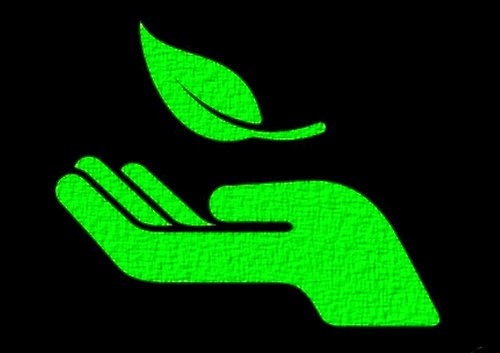




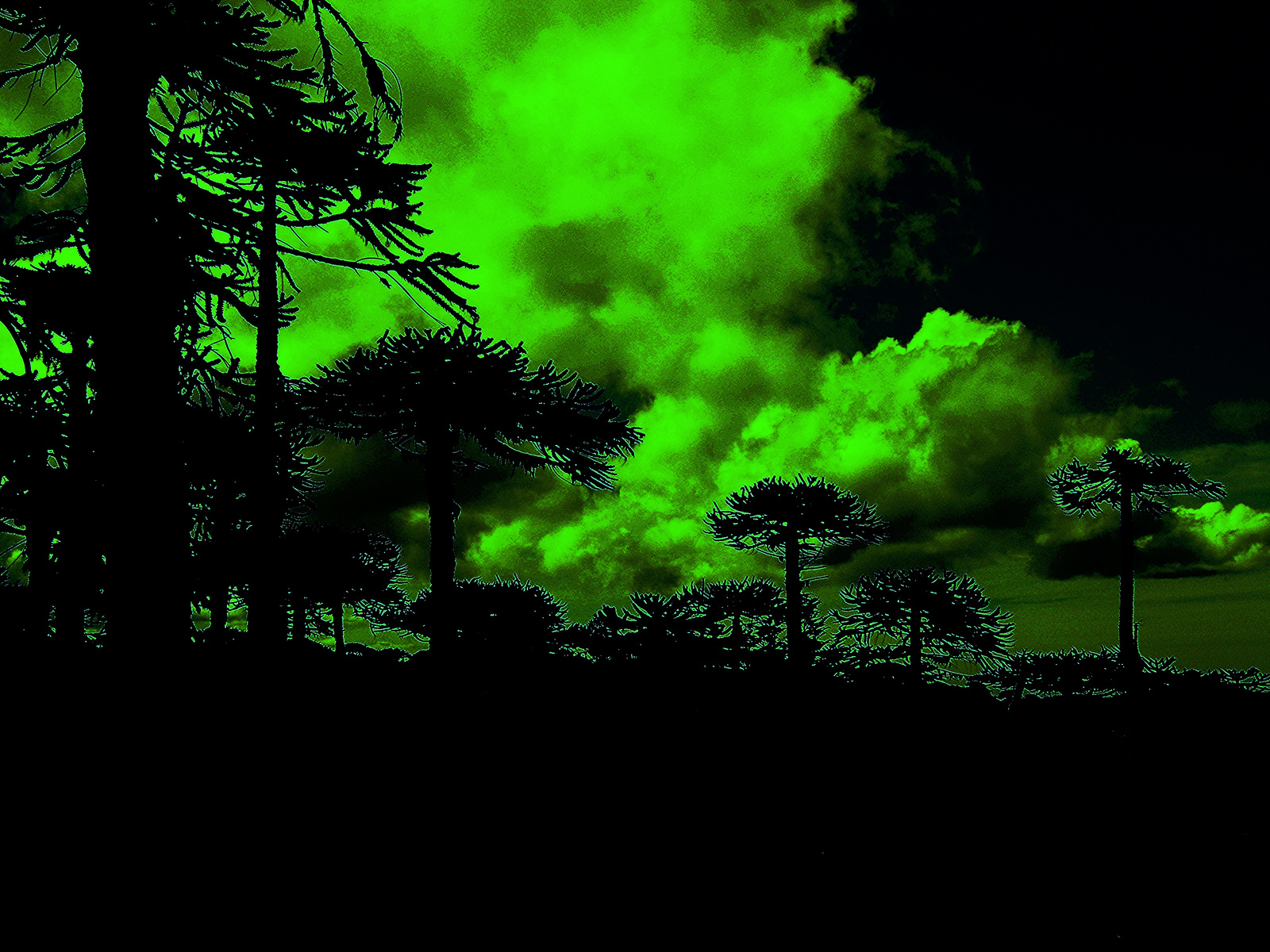

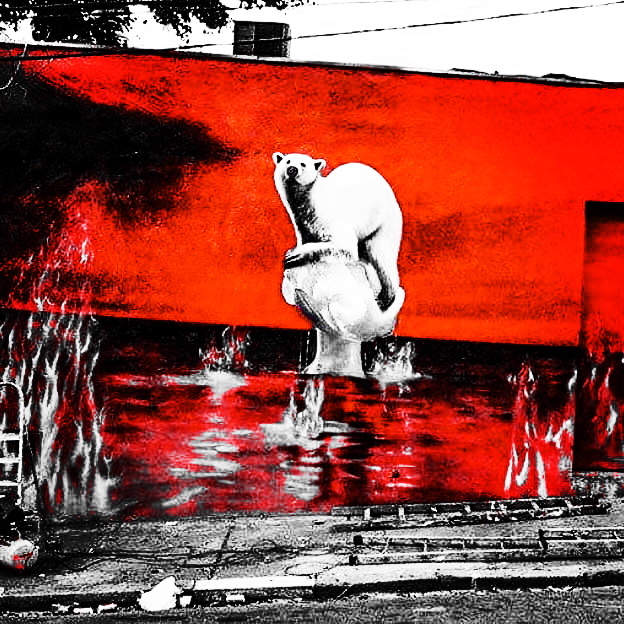
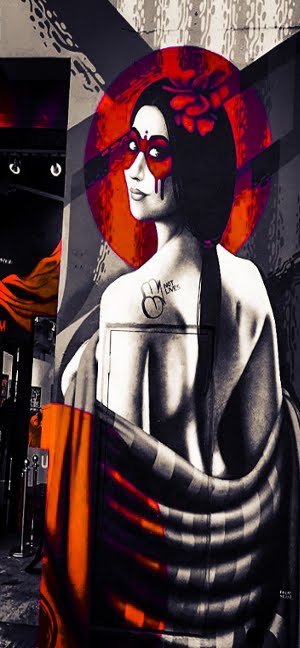

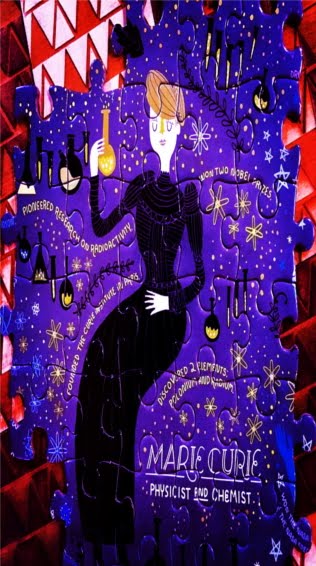



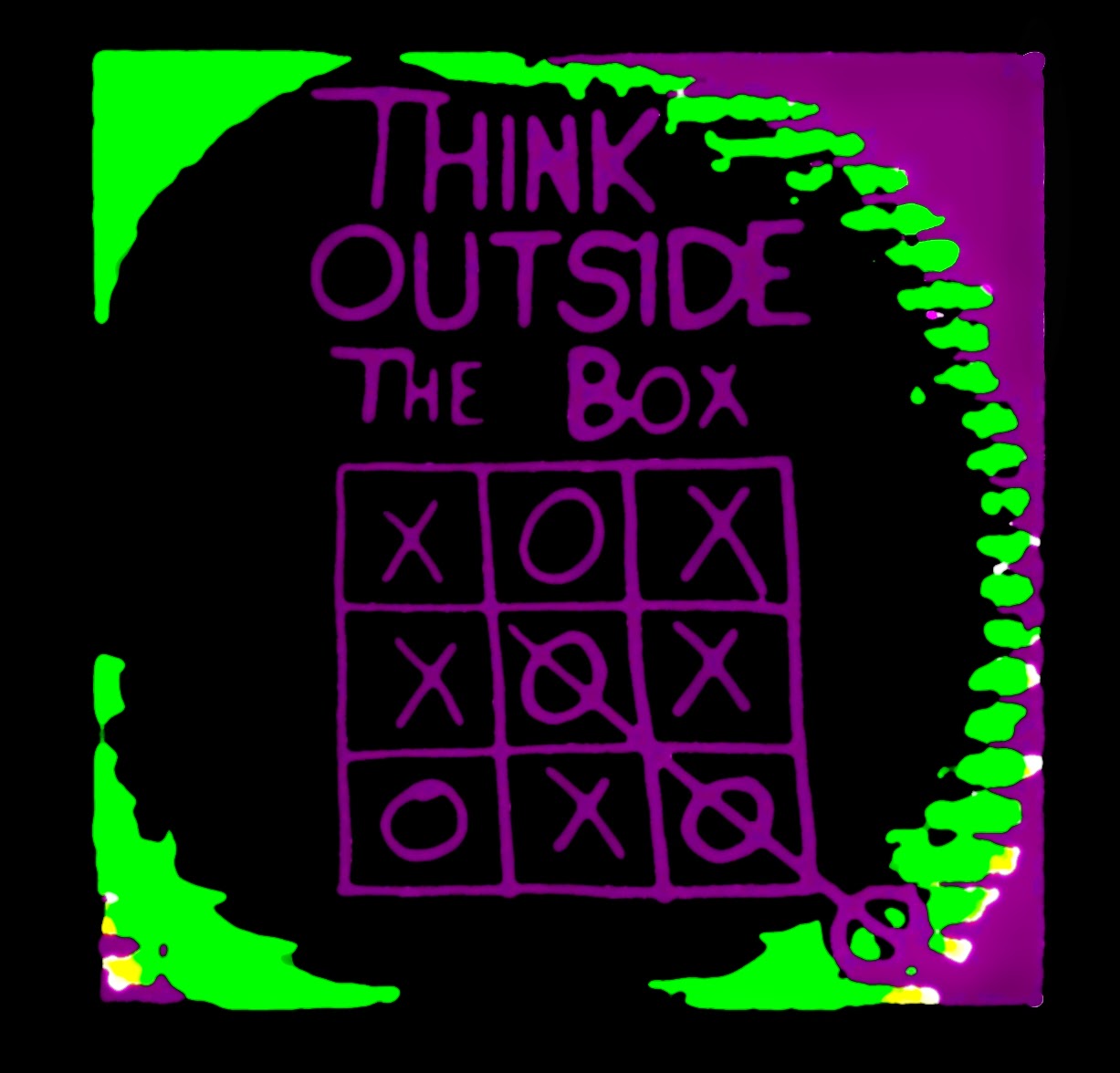
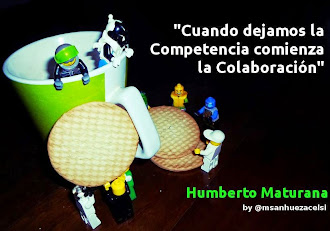
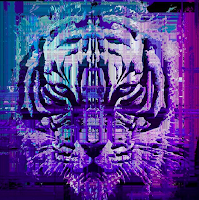












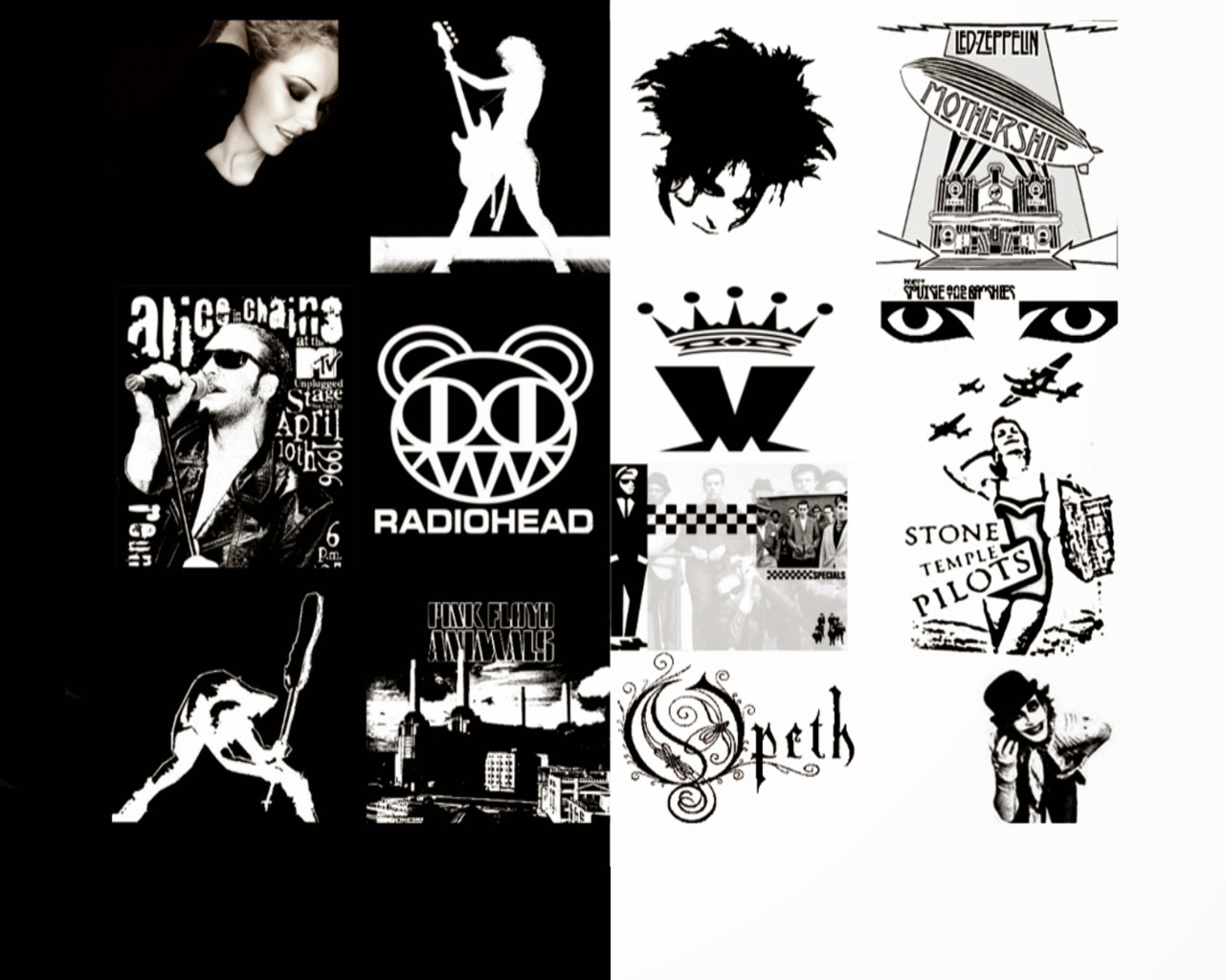


0 comentarios :